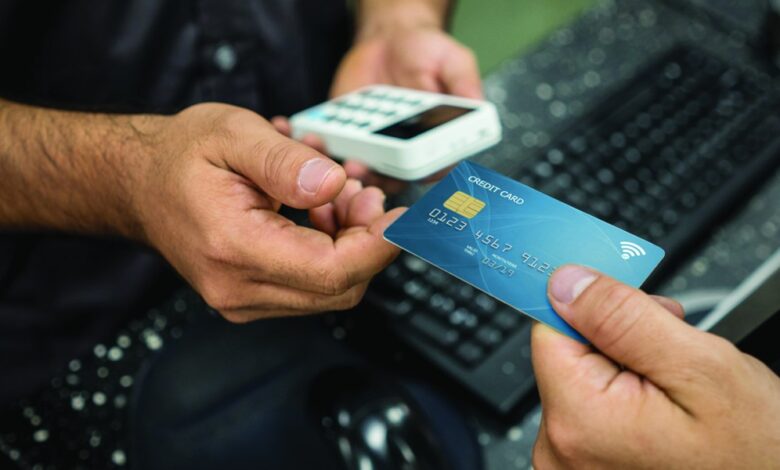Why Normal Credit Card Cashing Fees Exceed 10%

When people first discover 신용카드 현금화 (credit card cashing), their attention almost always goes to one thing: the fees. After all, if the purpose of cashing is to get money in hand quickly, then every percentage point deducted feels like a painful loss. It’s common to hear people ask, “Isn’t there a way to find a company that charges less than 10%?” On the surface, it sounds reasonable. Who wouldn’t want to save more money? But the reality is that in 2025, normal credit card cashing fees will consistently exceed 10%, and for good reason.
Understanding why means looking beyond the surface and breaking down how these transactions actually work. It’s not just about swiping your card and receiving money. There are layers of costs, taxes, risks, and operations that go into every transaction. Once you see the bigger picture, you’ll realize why offers of 7% or even 5% fees are not only unsustainable but also dangerous.
Why Fees Are Inevitable
To understand why fees exist at all, imagine the journey your money takes. When you use your card to purchase a gift certificate or other convertible item, the credit card company automatically takes its cut. This merchant fee, usually two to three percent, is non-negotiable. It’s how card companies earn revenue, and no business can avoid paying it. On top of that, South Korea applies a ten percent value-added tax (VAT) on such transactions. Right there, before any company expenses or risk costs are included, you already see why a fee lower than 10% doesn’t make sense.
Then come the operational expenses. Any legitimate business must pay for staff salaries, rent, technology platforms, customer service lines, and compliance systems. These are not luxuries they are essentials to keep transactions smooth and safe. Add to that the risk factor. Businesses offering credit card cashing always face the possibility of chargebacks, fraud, or customers defaulting. To cover these risks, they build an extra percentage into the commission. Without this cushion, they would be out of business after just a few bad transactions.
When you put all these layers together card fees, taxes, operating costs, and risk buffers it becomes obvious why the market average rests between fifteen and twenty-five percent.
The Average Ranges You See in 2025
As of this year, the numbers have stabilized into predictable patterns. Cashing out through gift certificates tends to carry a lower fee, usually between five and ten percent, because the process is straightforward and the risk is minimal. Small payment cashing, however, involves more handling and carries a slightly higher risk, so fees generally fall between ten and fifteen percent. For general credit card cashing methods, the average lands in the fifteen to twenty-five percent range.
This consistency is a good sign. It shows that legitimate companies are not competing by slashing prices to unsustainable levels but by offering reliability, transparency, and speed. If you see a company advertising five to seven percent fees across the board, you should recognize it as a warning sign.
The Trap of Chasing “Cheap” Fees
Many people still search for providers that claim to operate under ten percent. It’s easy to understand the temptation. On a one-million-won cash-out, a ten percent fee saves you one hundred thousand won compared to a fifteen percent rate. But before you get excited about the supposed savings, think about the math.
A five-hundred-thousand-won cash-out at seven percent would mean the company only earns thirty-five thousand won. Out of this, fifteen thousand has already gone to the credit card company as processing fees, and fifty thousand goes to VAT. That’s sixty-five thousand in fixed costs against a thirty-five-thousand fee. The company is losing money before even paying rent or staff salaries. Clearly, something is off. And if they can’t sustain the business through legitimate operations, they’re likely sustaining it by cutting corners or by not planning to stay in business long enough to honor their promises.
Stories of scams are everywhere. Customers are lured in by low-fee offers, only to see their money withheld, their personal information stolen, or the company disappear overnight. Instead of saving money, they lose everything.
Why Safe Companies Stay Realistic
Trustworthy providers know they can’t promise miracles. Instead of tricking customers with impossibly low numbers, they focus on delivering exactly what they promise: reliable transfers, same-day payments, and clear communication. Their fee structures stay within industry standards because they want to operate for the long haul, not vanish after a few weeks of quick profits.
Some providers even go further, offering resources and education to help customers make informed decisions. For instance, guides such as 정보이용료 현금화 진행 방법 explain how to handle information usage fees in a way that avoids scams. Companies that invest in educating their clients demonstrate they are serious about building trust.
Larger Amounts Lower Percentages
One area where customers can find genuine relief is in the size of their transaction. The larger the amount cashed out, the lower the percentage usually becomes. This happens because fixed costs like VAT and card fees don’t scale as quickly as the total amount.
For example, on a one-hundred-thousand-won cash-out, a fifteen percent fee is common, which means fifteen thousand won in costs. On a one-million-won transaction, the percentage often drops to twelve or thirteen percent, meaning one hundred twenty to one hundred thirty thousand won in fees. The absolute number is higher, but the percentage is lower, making large cash-outs relatively more efficient. This structure ensures both the company and the customer benefit fairly.
The Red Flags You Should Never Ignore
Even with all this knowledge, people sometimes let urgency cloud their judgment. A flashy ad promising “flat seven percent” feels like a lifeline in an emergency. But those are the exact moments when you need to stay calm and evaluate. Does the company have a registered business number? Do they have visible customer reviews that look authentic? Can you find consistent feedback about them on search engines? Do they avoid asking for deposits or personal information unrelated to the transaction? If the answer to these questions is no, the risk is too high.
The Cost of Mistakes
The danger of choosing the wrong provider goes beyond losing money in one transaction. It can ruin your financial reputation. Banks may block your card, your credit score could plummet, and your personal details might end up circulating on the dark web. In the long run, saving a few percentage points is never worth risking your financial security.
Looking Ahead
Technology will continue to influence how 신용카드 현금화 (credit card cashing) is done. Digital wallets, crypto tie-ins, and AI-driven financial services may add new layers of convenience. But no matter how advanced the system becomes, the fundamental costs, processing fees, taxes, operations, and risks will remain. As long as those exist, normal cashing fees will never realistically fall below ten percent.
Conclusion: Pay for Peace of Mind
The truth is simple: normal credit card cashing fees exceed ten percent because they have to. Companies that offer less are not bending the rules they’re breaking them, and dragging you along with them.
Instead of chasing impossible deals, focus on choosing a company that is upfront about its fees, operates within realistic ranges, and delivers on its promises. 신용카드 현금화 (credit card cashing) can be a helpful tool in emergencies, but only if it’s done safely. Paying fifteen percent and knowing your money will arrive securely is always better than risking everything on a promise that was never real.




